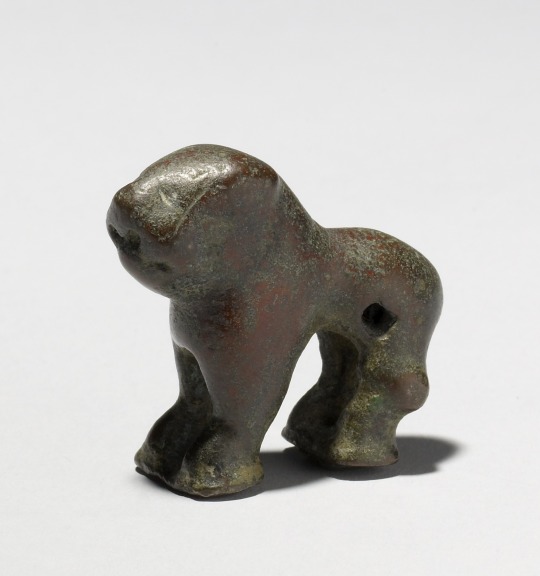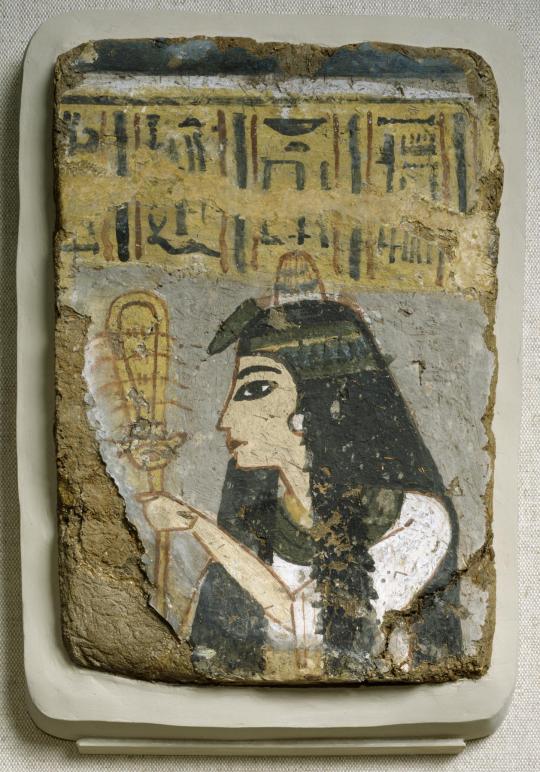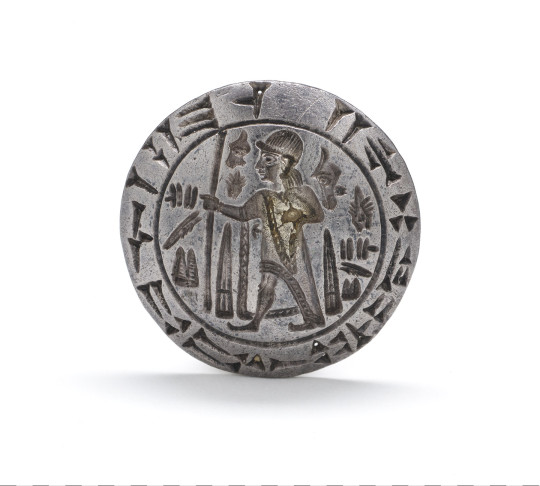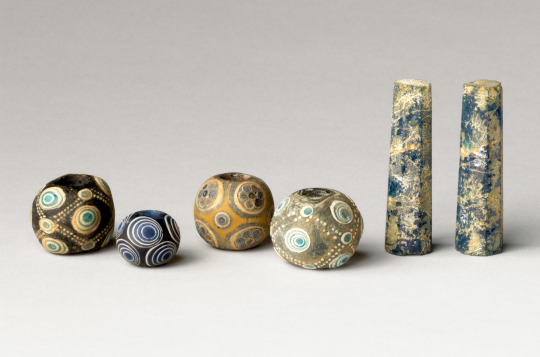Text

Lion Figurine
Mediterranean, late 2nd millennium BCE (Cycladic)
Images of lions were popular in the whole Mediterranean and Near Eastern world and related to power, kingship and royalty. Such figurines were believed to serve as protective amulets. This one was made using the lost-wax casting technique.
19 notes
·
View notes
Text

Mirror Case with Falconry Scene
Paris, France, 1325/50
29 notes
·
View notes
Text

Earflare with Flower-like Modeled Relief
Aztec, Mexico, 1450–1521
18 notes
·
View notes
Text

Buckle
Viking, Sweden, 11th century
Small bronze buckle with oval frame and iron tongue. The plate, which is moulded together with the frame, has heart-shaped ornamentation. The buckle would have been on the small side for a belt. It probably comes from a bag. It was found in a layer which can be dated to the 11th century. It is probably of Eastern origin.
13 notes
·
View notes
Text

Monkey Masquette
Mexico, Olmec, Middle Preclassic, 900-300 BCE
Along with carving life-size jade masks, the Olmec also fashioned miniature masks worn as items of jewelry. Although this item previously was identified as Maya both the stone and carving technique suggest an Olmec attribution. Rather than the bright apple-green color common to Classic Maya jades, this masquette is of translucent olive-green jadeite.
48 notes
·
View notes
Text

Stamp
Maya, Mexico/Guatemala, 300 BCE–250 CE
33 notes
·
View notes
Text

Pectoral with Solar Boat
Egyptian, 1292-945 BCE (New Kingdom-Third Intermediate Period)
This steatite plaque was used as a small pectoral. The front is carved in relief depicting the solar boat with two standing baboons in worshipping gesture flanking the winged scarab as well as the moon crescent and disk combination. Incised on the back is a scene in which the god Re-Harakhte is seated as falcon-headed deity and as a solar falcon on the left and including the center; opposite of them is Atum, the creator god.
13 notes
·
View notes
Text

Female Figure
Central Mexico, Tlatilco region, 1400–950 BCE
34 notes
·
View notes
Text

Wall Painting: Woman Holding a Sistrum
Egyptian, ca. 1250-1200 BCE (New Kingdom)
The woman in this fragmentary painting from a tomb wall has a wig of long, full hair, held in place by a flowered headband and topped with an ointment cone, a perfumed substance placed on wigs that gave off a fragrant aroma as it melted. A lotus blossom adorns the front of the headband. She holds a rattle called a sistrum, which women often played during temple ceremonies. What remains of the inscription suggests that she may have served with the temple staff of the god Amen.
57 notes
·
View notes
Text

Bowl with Incised Motifs
Olmec, Mexico, 1200-600 BCE (Early-Middle Formative)
20 notes
·
View notes
Text

Bowl with Interlocking Zigzag Motif in Four-Part Design on Interior Walls
Ancestral Pueblo, Arizona, 950–1400
44 notes
·
View notes
Text

Double-Spouted Vessel Representing a Templelike Structure
Nazca, Peru, 180 BCE–500 CE
25 notes
·
View notes
Text

Seal of Tarkasnawa, King of Mira
Hittite, Anatolia, late 13th century BCE (Hittite Empire)
Luwian hieroglyphs surround a figure in royal dress. The inscription, repeated in cuneiform around the rim, gives the seal owner's name: Tarkasnawa, king of Mira. The name of the ruler was previously transliterated into English as Tarkondemos and Tarkummuwa. Other inscriptions naming Tarkasnawa of Mira are known, including seals found at Hattusa (the capital of the Hittite Empire) and the Karabel rock relief carving near Izmir, Turkey. Located in west-central Anatolia, Mira was a vassal state of the Hittite Empire. This seal, originally published in the 1860s, was purchased in Izmir by its first known modern owner, A. Jovanoff. Its famous bilingual inscription provided the first clues for deciphering Luwian hieroglyphs, which were previously called Hittite hieroglyphs.
61 notes
·
View notes
Text

Circular Nose Ornament Incised with Concentric Bands
Coclé, Panama, 800–1200
13 notes
·
View notes
Text

Bead
China, Eastern Zhou dynasty (770–256 B.C.), c. 5th c. B.C.
The earliest examples of Chinese glass include polychrome beads like these, in which superimposed layers of different colors create eye-like motifs. Rich in lead and barium, these beads are chemically distinct from those of soda-lime glass made in Greek and Roman workshops of the eastern Mediterranean and western Asia, rare examples of which have been discovered in north and northwest China. Those foreign imports inspired Chinese craftsmen to create their own polychrome beads. Their burial contexts—strung together with jades to form pendant sets, or inlaid into bronze objects such as mirrors and garment hooks—indicate that Chinese patrons easily integrated these new creations into traditional art forms.
38 notes
·
View notes
Text

Denarius (Coin) Depicting the Goddess Minerva
Roman, 87 BCE
27 notes
·
View notes
Text

Beaker in the Form of a Trophy Head with Bound Lips
Nazca, Peru, 180 BCE–500 CE
12 notes
·
View notes